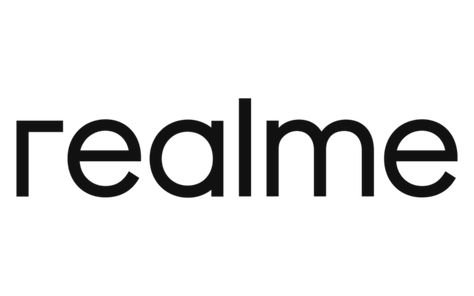
Eight years ago, a debate within Google over whether to lower its high advertising exchange fees took center stage in the company’s strategy discussions. The context was growing frustration from websites over Google’s high fee structure, with some websites developing a new technology called “header bidding” to bypass Google’s tools and increase their ad revenue. However, Google ultimately decided against reducing its fees, maintaining its dominant position in the digital advertising ecosystem.
Today, these decisions have become the focus of a significant antitrust trial initiated by the US Department of Justice (DOJ) against Google. The trial, taking place in federal court in Alexandria, Virginia, seeks to determine whether Google has used its dominant position in online display advertising to stifle competition and maintain its monopoly over the ad tech market.
Google’s Ad Tech Dominance and the Antitrust Challenge
The DOJ and state attorneys general argue that Google has leveraged its control over a comprehensive suite of ad tech tools to monopolize the online advertising ecosystem. These tools include a range of products used by websites to sell ad space, platforms for advertisers to buy ads, and an exchange that connects ad buyers and sellers. The government alleges that Google’s dominant position allows it to extract between $36 and $37 out of every $100 marketers spend on display ads, thus overcharging customers and excluding potential rivals from the market.
At the heart of the case is Google’s advertising exchange, AdX, which commands a 20% fee — the highest in the industry. The DOJ contends that Google’s fees are evidence of its market power and that its actions have prevented other competitors from gaining a foothold. Jay Friedman, CEO of the marketing company Goodway Group, testified that while his firm was able to negotiate lower rates with several other ad exchanges, Google remained inflexible on its fee structure, stating that lowering fees “wasn’t an option.”
The Emergence of Header Bidding
One of the key innovations in the online ad market was the development of “header bidding” technology by websites selling display ads. This technology was designed as a countermeasure to Google’s high fees, allowing websites to conduct ad auctions within the browser as a webpage loads. Header bidding enabled multiple ad exchanges to compete simultaneously for the same ad space, providing a way for publishers to boost their ad revenues by as much as 50%.
Stephanie Layser, a former executive at News Corp. who now works with Amazon.com Inc., testified that header bidding represented a significant shift in the balance of power within the online advertising market. By allowing more competition among exchanges, it offered publishers a means to bypass Google’s dominant AdX. However, Google viewed ads sold through header bidding as lower quality and more susceptible to spam and fraud — a claim that Layser disputed, noting that ads sold through Google’s exchange were equally likely to encounter these issues.
Internal documents presented in court revealed that Google saw header bidding as a “serious long-term threat” to its business model, potentially moving business away from its ad exchange. In response, Google did not lower its fees but instead developed a modified version of the technology in 2019, seeking to maintain its control over the ad auction process.
The Debate Within Google: To Lower Fees or Not?
The decision to maintain high fees despite the emergence of competitive technologies like header bidding was a strategic choice that highlighted Google’s confidence in its market position. Eisar Lipkovitz, a former vice president of engineering for display and video ads at Google, testified that internal discussions took place about potentially lowering the fees charged by AdX to a range of 10-15%. Despite this, the company ultimately decided against a fee reduction.
Lipkovitz acknowledged in his testimony that Google’s high fees had led many websites to adopt header bidding. However, he argued that as a former engineering leader, he lacked the authority to make decisions on fee adjustments, illustrating the centralized control within Google’s organizational structure over key pricing decisions.
Google’s internal documents also revealed a broader strategy to maintain its market dominance by locking in customers to its ad server product, DoubleClick for Publishers (DFP). According to an email shared by Brad Bender, Google’s former vice president of product for display and video ads, the company leveraged DFP’s “huge switching cost” to discourage websites from moving to other platforms. Former DoubleClick CEO David Rosenblatt was quoted as saying, “Switching platforms is a nightmare. It takes an act of God to do it.” This strategic approach allowed Google to maintain a “first look” advantage over ad space, giving it a competitive edge over rival ad exchanges.
The Antitrust Allegations: A Pattern of Monopolistic Behavior?
The government’s case against Google rests on several key allegations:
- Monopoly Maintenance: The DOJ argues that Google has illegally maintained its monopoly in the online ad tech market through anti-competitive practices. By refusing to lower its fees and developing countermeasures to neutralize competitive threats like header bidding, Google is alleged to have used its dominance to keep rivals out.
- Overcharging and Exclusion of Competitors: The government claims that Google’s high fees and control over the ad tech stack allow it to overcharge advertisers and publishers, capturing a disproportionately large share of ad spend. By controlling every step of the ad placement process, from the tools publishers use to sell ads to the exchange where ads are bought, Google has effectively excluded other players from the market.
- Restricting Innovation: By labeling header bidding a threat and developing its own version, Google allegedly stifled innovation that could have democratized the ad market. The government suggests that header bidding represented a viable alternative to Google’s closed ecosystem, promoting more competition and potentially lowering costs for advertisers.
- Exploiting Market Position for Strategic Advantage: Internal emails and documents presented in court suggest that Google intentionally used its position to create and maintain a closed system that disadvantaged competitors. For example, Rosenblatt’s strategy of locking in customers to DFP ensured that Google had privileged access to valuable ad inventory, which it could use to undercut other exchanges.
Google’s Defense: Quality Control and Market Efficiency
In response to these allegations, Google is expected to argue that its practices are justified by the need to maintain quality and efficiency in the digital advertising market. The company contends that its fees are commensurate with the value it provides to both advertisers and publishers through its extensive network, sophisticated tools, and technology infrastructure.
Google may also argue that its concerns about header bidding are based on legitimate quality control issues, including risks of spam and fraud. By developing its own version of header bidding technology, Google might claim it aimed to offer a more secure and efficient alternative that aligns with its standards for ad quality.
Broader Implications for the Digital Advertising Market
The outcome of this antitrust case could have far-reaching implications for the digital advertising industry. If the court sides with the DOJ, it could force Google to make significant changes to its business practices, potentially lowering its fees and opening up its ecosystem to more competition. This could lead to reduced costs for advertisers and more revenue opportunities for publishers, fundamentally altering the landscape of online advertising.
Alternatively, if Google prevails, it may reinforce its position as the dominant player in the digital ad market, continuing to exert significant influence over how ads are bought and sold online. Such an outcome could lead to calls for more stringent regulations or legislative action to address perceived anti-competitive practices in the tech industry.
Conclusion: A Landmark Case for Digital Advertising
The ongoing antitrust trial against Google represents a critical moment in the regulation of digital markets. As the court deliberates over the evidence presented, the central question remains whether Google’s practices constitute illegal monopolistic behavior or simply reflect a competitive strategy within a rapidly evolving industry.
This case will not only determine the future of Google’s advertising business but also set a precedent for how digital monopolies are challenged and regulated in the 21st century. As the trial continues, stakeholders across the tech industry, advertisers, publishers, and regulators will be closely watching for signs of how the digital ad landscape might change in the years to come.
ALSO READ: Intersekt and CyberCon 2024: Victoria’s Bold Move








